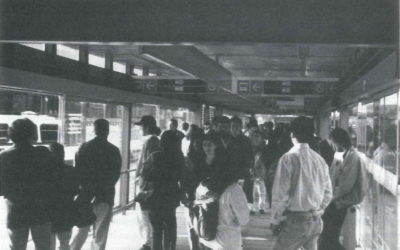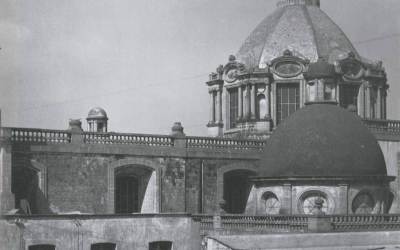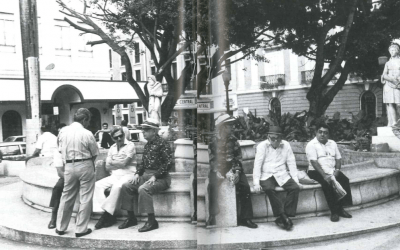Twilight in Tlaxcala
A Mexico City Neighborhood

“Capilla del Cristo (San Pablo del Monte) Estado de Tlaxcala,México” by Catedrales e Iglesias is licensed under CC BY 2.0
“The young women in the town of Tlaxcala who run the information booth were done giving directions in the textbook Spanish that the tourists could understand. They’d closed out the register of pesos devalued to the equivalent of dimes. They’d stocked the towering racks of dictionaries, maps, and picture-postcard views of the monogamous volcanoes of Mesoamerican myth that you could see from there—smoking-hot snowcone Popo and his jagged wife Itzy. And now they were rolling down for the night the corrugated blinds, blowing each other their buenas tardes kisses, and going their separate ways down avenues that radiated from the tile-fountain on the zócalo like spokes from the hub of a wheel.
The one with glasses—you just knew—would join her family in a prayer of thanks to la Virgen de Guadalupe and Juan Diego, her Aztec visionary, for the rice, refritos, and peppers they’d share above their storefront tortilla shop. The one with the limp would stop at the market beside the turgid canal, where her parents sold tropical fruit—bananas, papayas, mangos—from table-top pyramids modeled, you’d imagine, after those at Teotihuacan. But the one with long legs, off to pick her sister up after catechism class like she did each day, crossed that canal on a footbridge and climbed, one breath per step at a time, straight up the steep hill.
After this many ascents into her terraced neighborhood, she didn’t even notice what all the tourists saw, pausing at each house to marvel at the sights. Bougainvillea vines with vivid magenta flowers braided the railings and downspouts of the stucco Spanish pastel houses. Cactus fences guarded the small back yards, where women cooked stews over charcoal fires in terra cotta beehive ovens. Mongrels patrolled the patios. Clotheslines webbed the flat rooftops.
Taking a right on the cobblestone corridor at the crest of the ridge, she walked between thick fields of ripe green corn, seeing nothing but green on both sides of the road and nothing but blue above her in the sky. Soon, though, the cross on the cathedral at the edge of the cliff came into view, as white as the one cloud that fluffed the sky in the distance behind it. After a few more steps, crossing herself, she saw the entire steeple appear, too steeply pitched for anyone but angels to climb; then, as always, the reliable red tile roof of the sturdy gray stone chapel rising into her field of vision in irregular increments, one rough geometric shape at a time, in triangles, cubes, trapezoids, and parallelograms bordered at the bottom by the horizon-line of corn, until finally the entire church in all of its glory was in view and she could see beyond it to the volcanoes Popo and Itzy resting on the horizon across the valley in the distance.
Scott Ruescher is the Assistant to the Director at the Harvard Graduate School of Education Program.
Related Articles
Bogotá: A City (Almost) Transformed
The sleek red bus zooms out of the station in northern Bogota, a futuristic symbol of an (almost) transformed city. Nearby, thousands of cyclists of all ages enjoy a sunny morning on Latin America’s largest bike-path network.
Editor’s Letter: Cityscapes
I have to confess. I fell passionately, madly, in love at first sight. I was standing on the edge of Bogotá’s National Park, breathing in the rain-washed air laden with the heavy fragrance of eucalyptus trees. I looked up towards the mountains over the red-tiled roofs. And then it happened.
Social Spaces in San Juan
My city, San Juan, is a social city. Its character and virtue are best illustrated and defined by the collective and individual memories of its people and those places where we go to spend time in idleness….




